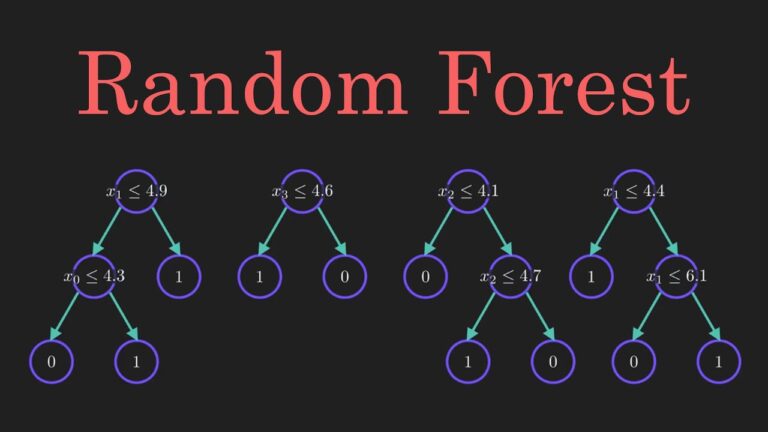Random Forest in Simple Terms
Random Forest is a machine learning algorithm that combines the predictions of multiple decision trees to make more accurate and reliable predictions. It is like a “forest” of decision trees, where each tree in the forest makes a prediction, and the final prediction is determined by aggregating the predictions of all the trees. Random Forest is a popular algorithm because it tends to be robust, accurate, and can handle a wide range of problems.
Examples
Let’s say you want to predict whether a person will like a particular movie based on their age, gender, and the genre of the movie. You collect data from several people, including their age, gender, the movie genre, and whether they liked the movie or not. You can build a Random Forest model using this data to predict whether a new person will like a movie or not.
The Random Forest algorithm creates multiple decision trees, each trained on a different subset of the data. Each tree individually predicts whether a person will like the movie or not based on their age, gender, and the movie genre. Then, the predictions from all the trees are combined, and the final prediction is determined by majority voting. For example, if 7 out of 10 trees predict that the person will like the movie, the Random Forest will predict that the person will like the movie.
Random Forest Explained to a kid
Imagine you have a big decision to make, like whether to go to the park or stay home. You might ask your friends for their opinions to help you decide. Random Forest is a bit like that. It’s a special way for a computer to make decisions by asking many “friends” (or trees) for their opinions and combining all their answers.
Each “friend” (or tree) in the Random Forest is like a little expert on a specific part of the decision. For example, one friend might be good at predicting if it’s sunny or not based on the temperature, while another friend might be good at predicting if it’s crowded at the park based on the day of the week. Each friend looks at a few different things (or features) and makes its own prediction.
Once all the friends have given their opinions, Random Forest combines all their answers to make a final decision. It does this by counting how many friends agreed on each choice and then picking the choice that most friends voted for. For example, if most friends said it’s sunny and not crowded, Random Forest would suggest going to the park.
Random Forest is a smart way for computers to make decisions because it listens to many different “friends” with their own expertise. This helps it make more accurate predictions and decisions, just like you would when asking your friends for advice.
Use Cases of Random Forest:
Here are 11 use cases where Random Forest can be applied:
- Credit Scoring: Predicting the creditworthiness of individuals based on various factors like income, age, and credit history.
- Stock Market Prediction: Forecasting stock prices based on historical market data, company performance, and other relevant factors.
- Medical Diagnosis: Classifying patients as healthy or having a specific disease based on symptoms, test results, and medical history.
- Customer Churn Prediction: Identifying customers who are likely to cancel their subscription or stop using a service based on their behavior, demographics, and usage patterns.
- Fault Detection: Detecting anomalies or faults in machinery or equipment by analyzing sensor data and historical records.
- Spam Email Filtering: Classifying emails as spam or non-spam based on the content, sender information, and email metadata.
- Image Classification: Recognizing objects or patterns in images based on features extracted from the images.
- Recommendation Systems: Suggesting personalized recommendations for products, movies, or music based on user preferences and behavior.
- Predictive Maintenance: Anticipating when machinery or equipment is likely to fail based on sensor data, usage patterns, and maintenance records.
- Fraud Detection: Identifying fraudulent transactions or activities by analyzing patterns, user behavior, and historical data.
- Crop Yield Prediction: Predicting crop yields based on factors like weather conditions, soil quality, and farming practices.

